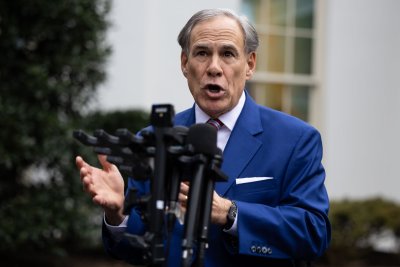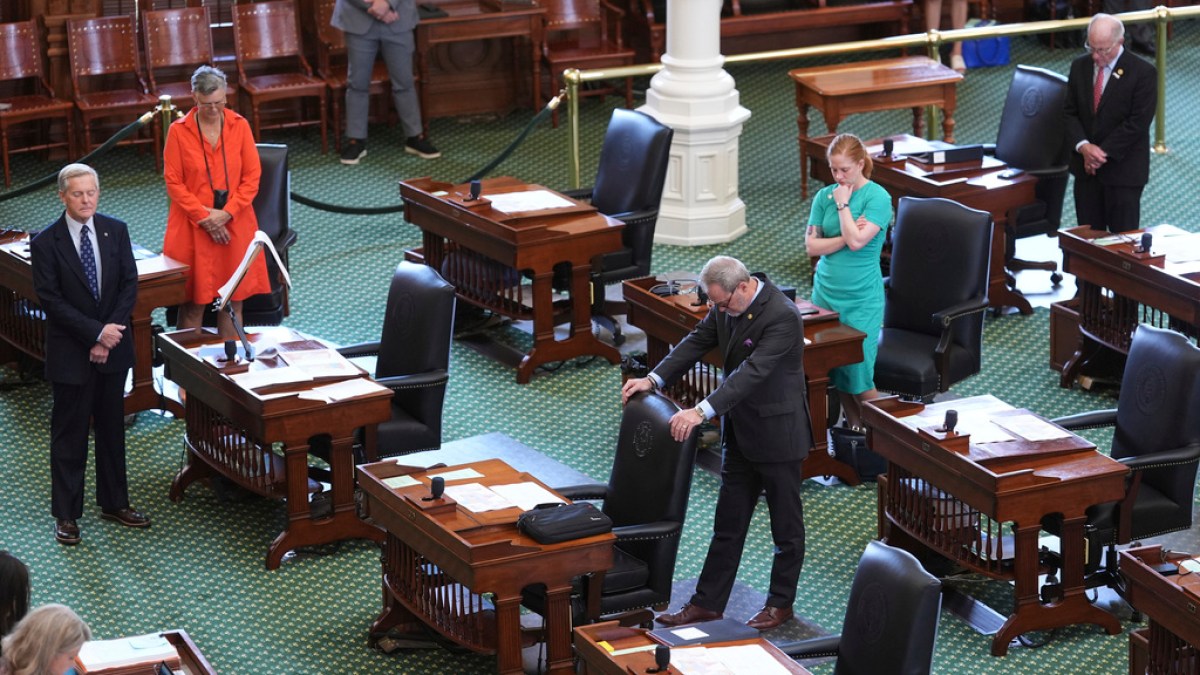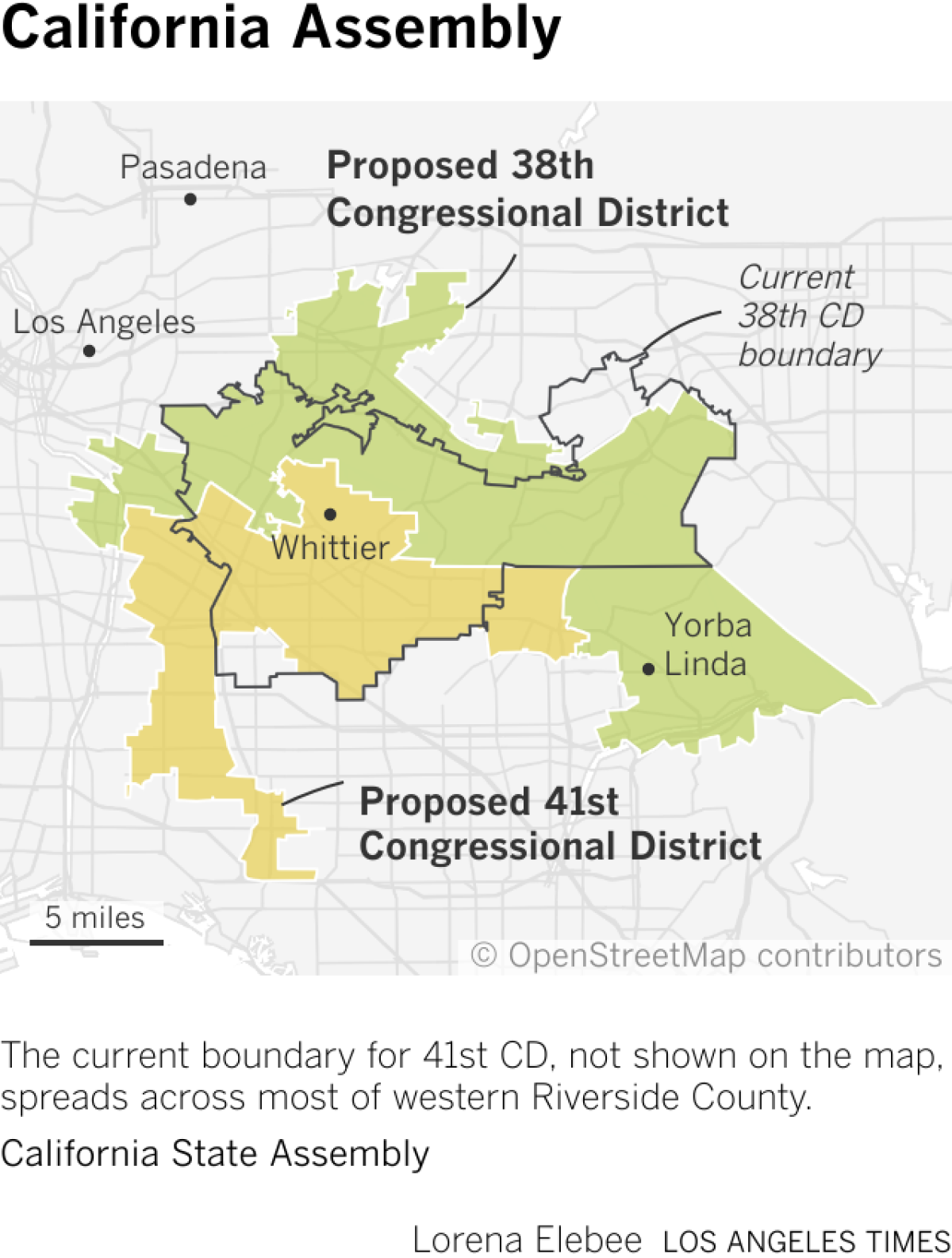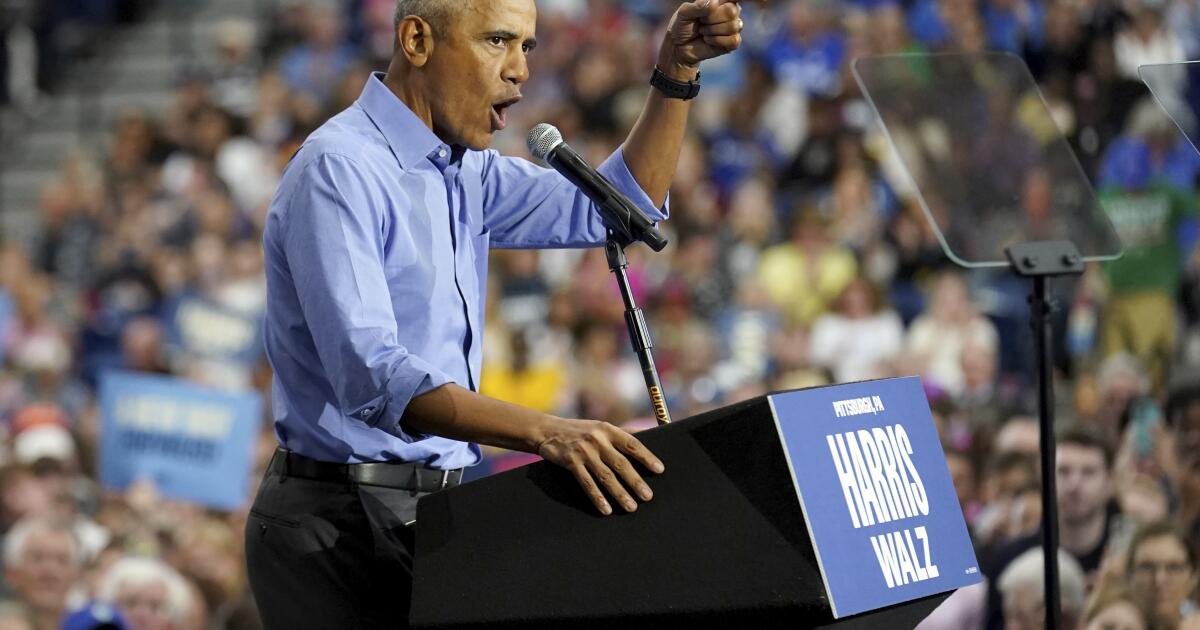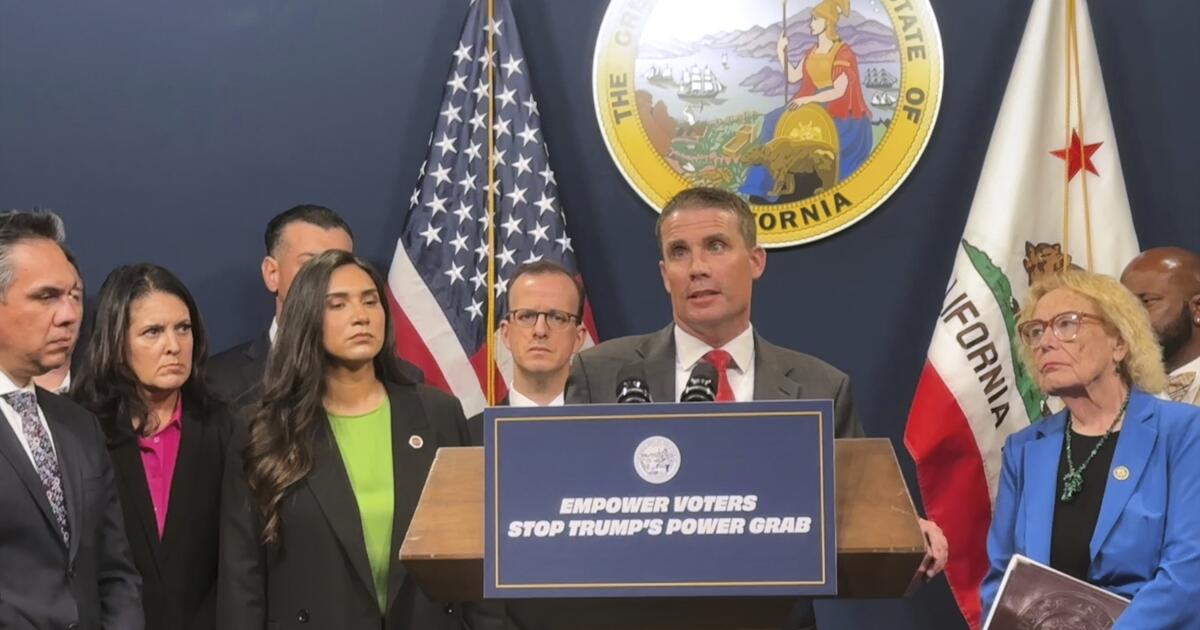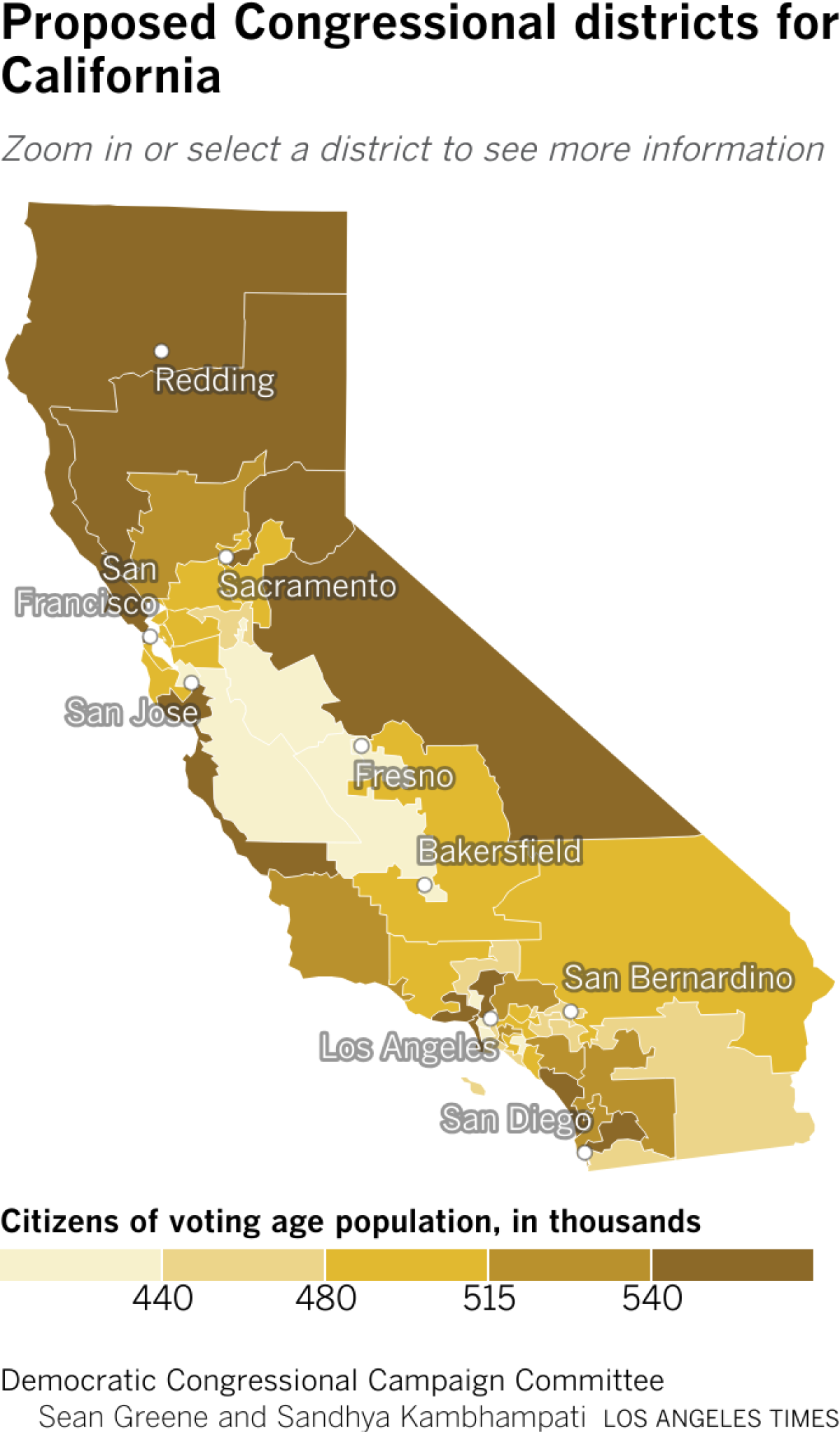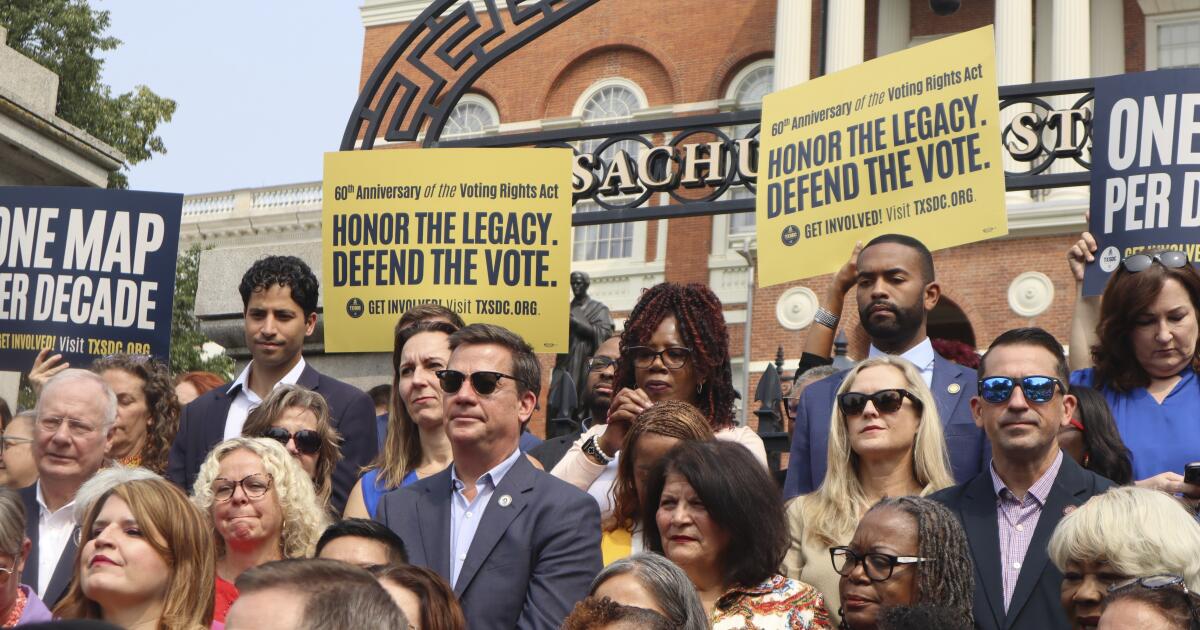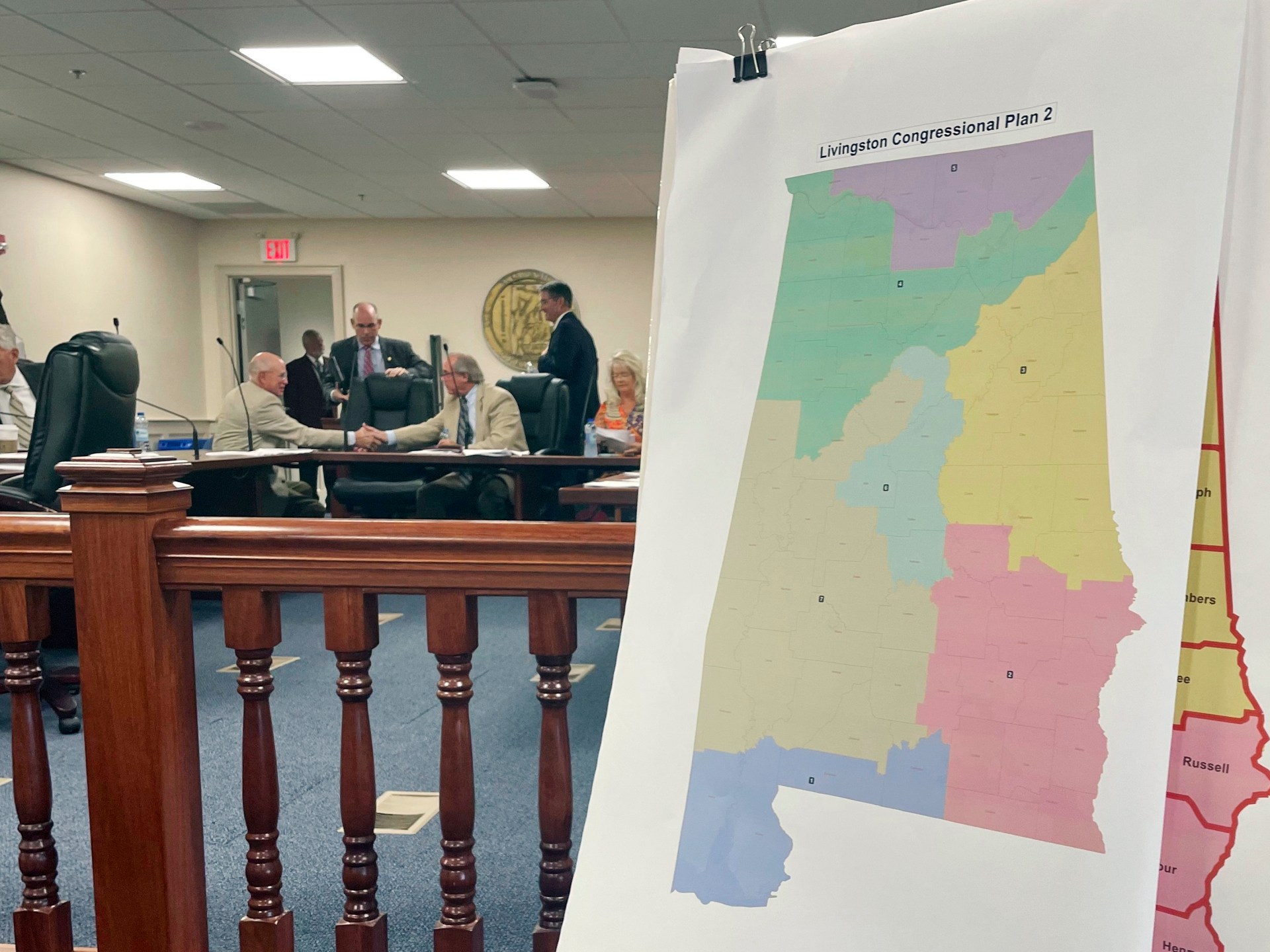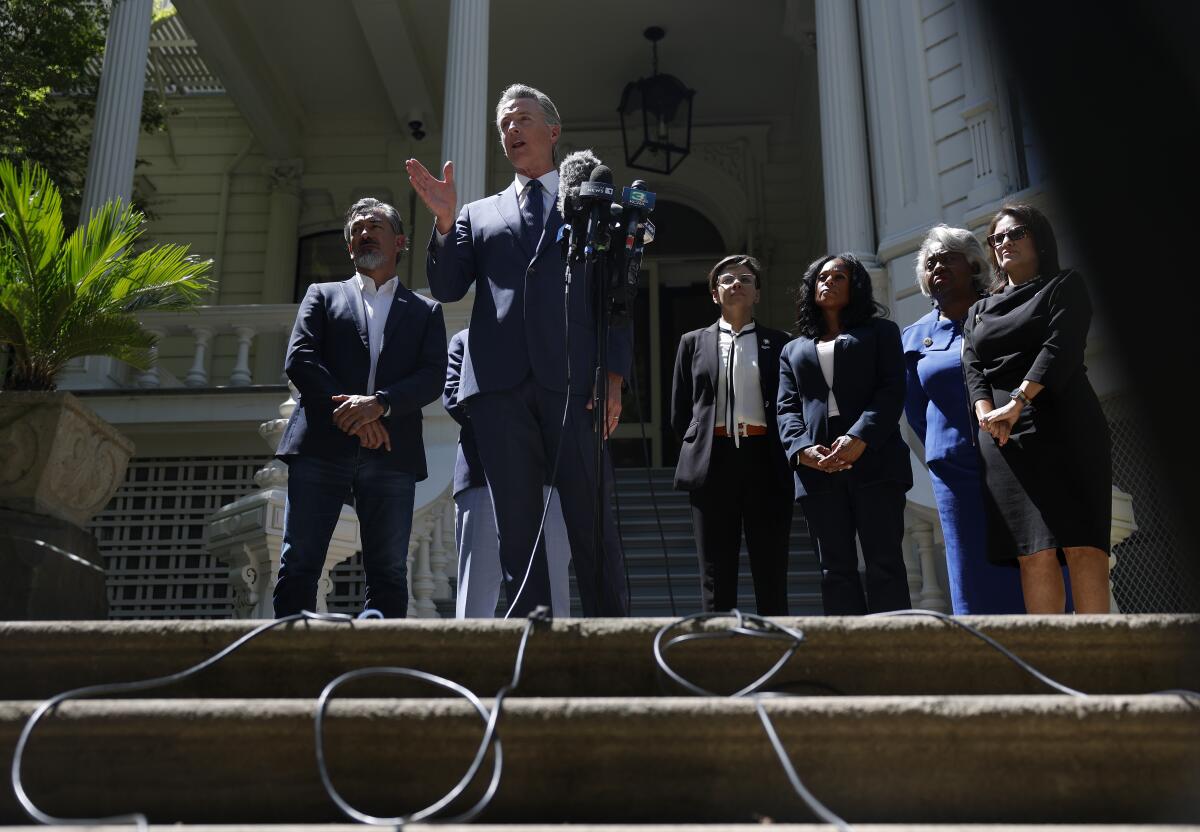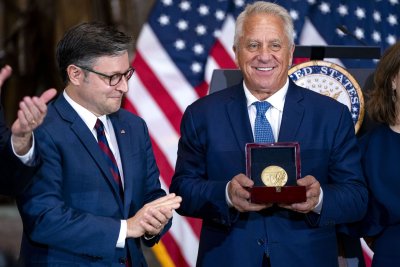How each of the proposed California congressional districts could change
Gov. Gavin Newsom spearheaded a bold overhaul of California’s congressional map, a move that could dramatically shift the state’s political landscape.
A Times analysis of recent election results found the redistricting effort, which will go to voters on Nov. 4 as Proposition 50, could turn 41 Democratic-leaning congressional districts into 47. Democrats currently hold 215 seats in the House, while Republicans control 220. If California voters approve the new map, the shift could be enough to threaten the GOP’s narrow majority.
Newsom’s plan was pushed by state and national Democratic leaders, following a move by Texas to approve its own maps that could give the GOP five more House seats. There’s also a push by the Republican-led states to redraw their lines before the 2026 midterm elections to help the Republicans remain in control. The governor’s plan was approved by the state Legislature last week and now goes to the voters in a November special election. This week California Republicans filed a lawsuit with the state Supreme Court to block the ballot measure.
To get a sense of how the proposed maps might alter the balance of power in Congress, The Times used results from the 2024 presidential election to calculate the margin of victory between Democrats and Republicans in the redrawn districts.
In some cases, districts were split apart and stitched together with more liberal areas. In one area, lines have been redrawn with no overlap at all with their current boundary. As a result, four formerly Republican-leaning swing districts would tilt slightly Democratic, while two others would shift more heavily toward the left. Four out of the five remaining Republican strongholds would become even darker red under the proposed map.
1st District: Rep. Doug LaMalfa (R-Richvale)
Under the proposed changes, the district would shift from a GOP-leaning area to a Democratic-leaning area.
In its current form, California’s 1st Congressional District sweeps south from the Oregon border almost to Sacramento. For the last 12 years, it has been represented by Republican Rep. Doug LaMalfa, who won reelection last November with nearly two-thirds of the vote.
But under the proposed map, that district is split in two. The new 1st District would run inland from Santa Rosa through Chico to the Nevada border. The redrawn 2nd District would follow the north coast from Marin County and the border with Oregon. It would also include deep red Shasta County.
The Times analysis found the proposed 1st District experienced the largest Democratic shift, among all the districts that flipped from red to blue, moving from a 25-point advantage for Trump to a 12-point advantage for Harris. That gain was made possible in part by pulling in more Democratic-leaning areas from the 2nd District, making it slightly less blue.
3rd District: Rep. Kevin Kiley (R-Rocklin)
The proposed district dips into blue Sacramento, flipping the district from red to blue.
Rep. Kevin Kiley has represented the 3rd District since 2022. But he would face an uphill battle to keep the seat on the redistricted map. The new lines lop off the conservative-leaning Eastern Sierra and instead pulls in Democratic voters from Sacramento.
In the 2024 presidential election, the current 3rd District backed Trump by 4 points. Under Newsom’s proposed map, that same area would have gone for Harris by 10 points, creating a 14-point swing that transforms the district from purple to solidly blue.
Kiley, whose district is targeted for elimination under Newsom’s plan, has called for a ban on all mid-decade congressional redistricting. The 3rd District’s boundaries are significantly reduced in the new map, and shifting demographics, including growth in the Asian American population, could further tilt the seat away from Republicans.
41st District: Rep. Ken Calvert (R-Corona)
The current 41st District will move completely.
Rep. Ken Calvert’s 41st District, long centered in the competitive western Inland Empire, would be eliminated and completely redrawn in Los Angeles County. The district would transform from a swinging GOP-leaning seat into one where Democrats would hold a 14-point advantage.
Parts of the new 41st would be carved out of the current 38th District, represented by Democrat Linda Sánchez. That change shifts some of Sánchez’s Democratic base into the new 41st district, making it more favorable to Democrats while leaving the 38th slightly less blue.
The proposed boundary for District 41 includes parts of District 38.
At the same time, the Hispanic share of the population would rise, further bolstering the Democrat‘s strength in the proposed district. The new 41st seat would become a majority-minority district. The redistricting proposal includes 16 majority-minority districts; the same number as the current map except for swapping the 41st District for the 42nd.
A section of the current 41st district would be added to Rep. Young Kim’s 40th District. The reshaped 40th District would move 9.7 points to the right — the biggest rightward shift among Republican-held districts.
48th District: Rep. Darrell Issa (R-Bonsall)
Under the proposed changes, 32% of the citizens of voting age in this district would be Latino, an increase from 24% currently. This district now includes Palm Springs.
The 48th District, a Republican stronghold represented by Darrell Issa, carried a 15-point GOP margin of victory under the current map. But the proposed lines would shift voters into San Diego County, giving Democrats a new edge. The district’s demographics would also change, with a larger share of Hispanic voters. As a result, what had been a safe Republican seat would become a swing district, where Democrats would hold a narrow 3-point advantage. The proposed 48th District includes Palm Springs, a liberal patch that was previously in the 41st District.
Deepening blue
Beyond flipping Republican-leaning swing districts, another aim of the redistricting plan is to shore up vulnerable Democratic seats. Democrats have long fought to hold onto these coastal Orange County seats, eking out narrow wins. Rep. Derek Tran of Cypress unseated a Republican incumbent by just about 650 votes, while Rep. Dave Min of Costa Mesa survived last November with a margin of less than 3 percentage points. Asians are the largest minority currently in Districts 45 and 47.
Under the current map, Harris carried the 45th District by only 1.5 points and the 47th by 4 points. But in Newsom’s proposed map, those advantages widen to 4 and 10 points, respectively, transforming fragile footholds into far safer Democratic turf.
The new changes dilute the number of GOP voters in both Rep. David Valadao’s District 22 and Rep. Adam Gray’s District 13.
— Additional development by data and graphics assistant editor Sean Greene.


